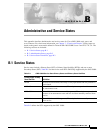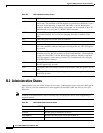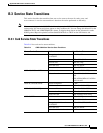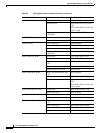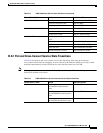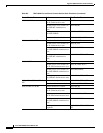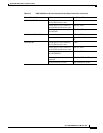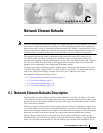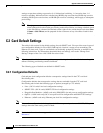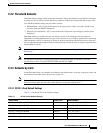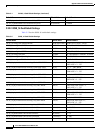
C-1
Cisco ONS 15600 Reference Manual, R7.2
APPENDIX
C
Network Element Defaults
Note
The terms "Unidirectional Path Switched Ring" and "UPSR" may appear in Cisco literature. These terms
do not refer to using Cisco ONS 15xxx products in a unidirectional path switched ring configuration.
Rather, these terms, as well as "Path Protected Mesh Network" and "PPMN," refer generally to Cisco's
path protection feature, which may be used in any topological network configuration. Cisco does not
recommend using its path protection feature in any particular topological network configuration.
This appendix describes the factory-configured (default) network element (NE) settings for the
Cisco ONS 15600. It includes descriptions of card default settings and node default settings. For
procedures for importing, exporting and editing the settings, refer to the “Maintain the Node” chapter of
the Cisco ONS 15600 Procedure Guide. Cards supported by this platform that are not listed in this
appendix are not supported by user-configurable NE defaults settings.
To change card settings individually (that is, without directly changing the NE defaults), refer to the
“Change Card Settings” chapter of the Cisco ONS 15600 Procedure Guide. To change node settings,
refer to the “Change Node Settings” chapter of the Cisco ONS 15600 Procedure Guide.
This appendix includes the following sections:
•
C.1 Network Element Defaults Description, page C-1
•
C.2 Card Default Settings, page C-2
•
C.3 Node Default Settings, page C-29
•
C.4 CTC Default Settings, page C-39
C.1 Network Element Defaults Description
The NE defaults are preinstalled on each Cisco ONS 15600 TSC card. They also ship as a file called
15454-defaults.txt on the Cisco Transport Controller (CTC) software CD in the event you want to import
the defaults onto existing Timing and Shelf Controller (TSC) cards. The NE defaults include card-level,
CTC, and node-level defaults.
Changes to card provisioning that are made manually using the “Change Card Settings” chapter in the
Cisco ONS 15600 Procedure Guide override default settings. If you use the CTC Defaults editor (in the
node view Provisioning > Defaults tab) or import a new defaults file, any changes to card or port settings
that result only affect cards that are installed or preprovisioned after the defaults have changed.
Changes that are made manually to most node-level default settings override the current settings,
whether default or provisioned. If you change node-level default settings, either by using the Defaults
editor or by importing a new defaults file, the new defaults reprovision the node immediately for all



